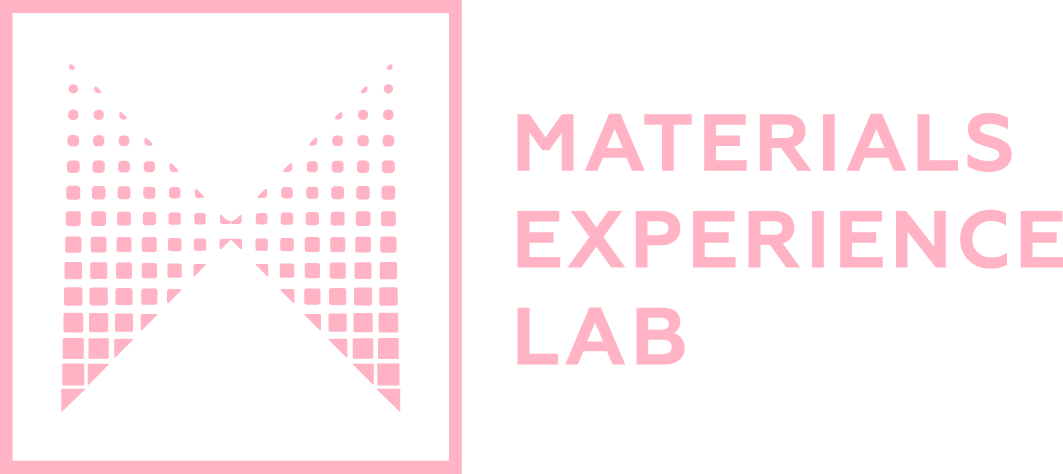PUBLICATIONS HIGHLIGHTS
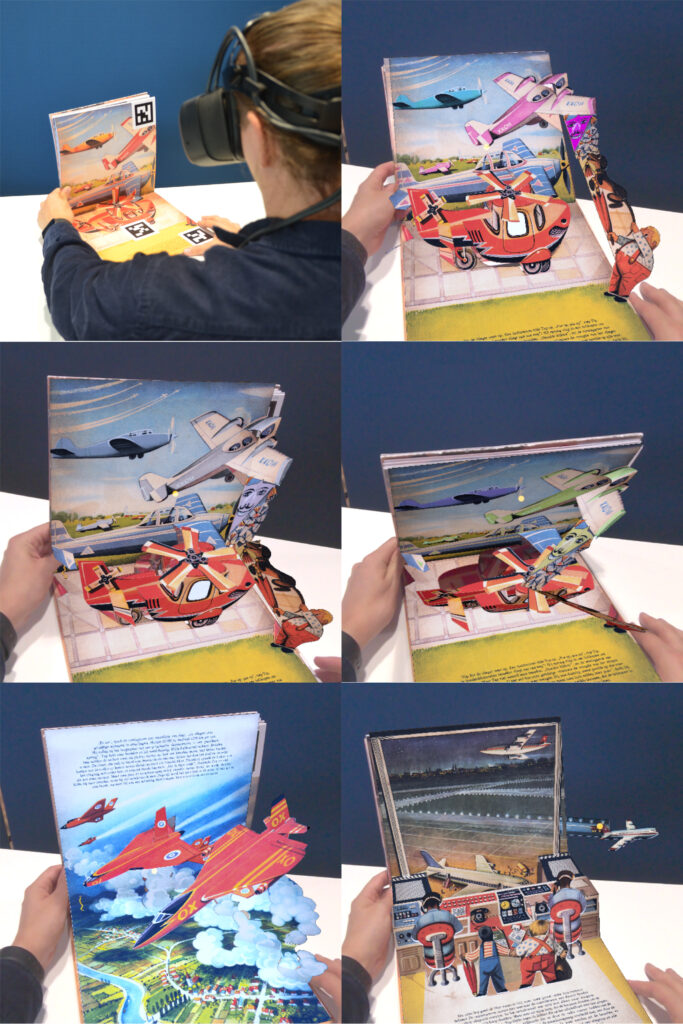
Willemijn Elkhuizen, Jeff Love, Stefano Parisi, Elvin Karana
Abstract: Direct interaction with cultural heritage (CH) artefacts is frequently unavailable to visitors, offering an opportunity for HCI designers to explore integrating material aspects into digitally-mediated encounters with CH artefacts. We argue that a thorough understanding of the material experiences of CH artefacts can open a novel design space, enabling engaging and meaningful interactions with digital representations. Capitalising on this potential, we present a user study where we systematically explore the material experiences of historic pop-up and movable books. Our analysis identifies five key material qualities to inspire augmentation: fold-ability, slideability, tear-ability, age-ability, and print-ability. Highlighting how these material qualities can inspire novel interactions with their digital representations, we present two extended-reality (XR) prototypes of a CH book. With our work, we present HCI designers with a novel approach on designing CH experiences, firmly rooted in materiality, challenging the prevalent paradigms of ‘technology driven’ or ‘as-realistic-as-possible’ sensory experiences often found in CH-HCI.
CHI ’24, May 11–16, 2024, Honolulu, HI, USA. (Accepted)
LIVING WITH CYANOBACTERIA: EXPLORING MATERIALITY IN CARING FOR MICROBES IN EVERYDAY LIFE.
Jiwei Zhou, Zjenja Doubrovski, Elisa Giaccardi, Elvin Karana
Abstract: Materiality of artefacts holds the potential to intricately and dynamically shape our daily practices. We posit this capacity can be harnessed in fostering creative unfolding of everyday care practices towards living artefacts. To explore this premise, we designed a cyanobacterial living artefact with air purifying capacity, and invited eight participants to live with and care for it for two weeks. The artefact can be situated in diverse locations within domestic spaces, wherever the participant would consider air purification necessary and certain lighting conditions beneficial for the artefact’s vitality. This versatility is supported by the artefact’s colour-changing, pliable, adhesive, and suspendable nature. We analysed visual documentations and semi-structured interviews of participants’ experiences of the artefact. Our findings suggest distinct roles of materiality for care regarding labour, knowledge, and exploration. We further highlight the intricate design space encompassing openness, temporalities and semantic fitness towards nurturing mutualistic care in human-microbe interactions.
CHI ’24, May 11–16, 2024, Honolulu, HI, USA. (Accepted)
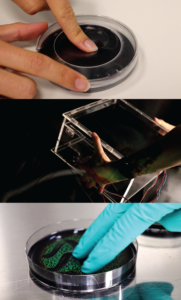
Clarice Risseeuw, Holly McQuillan, Joana Martins, Elvin Karana
Abstract: HCI designers increasingly engage in the integration of microbes into artefacts, leveraging their distinct biological affordances for novel interactions. While in many explorations the interaction between humans and microbes is mediated, scholars also highlight the potential of direct interactions, such as visualising mechanical distortions or fostering a sense of relationality with nonhumans through eliciting intimate encounters. Seizing upon this potential, our study delves into the realm of direct interactions involving Flavobacteria, recently introduced as a colour-changing interactive medium in HCI. We present a design space for direct interactions where humans can (re)activate, (re)direct, and (re)arrange Flavobacteria’s colourations, thereby fostering a personal and dynamic interplay between humans and microbes. With our work, we aspire to provide pathways and ignite inspiration among HCI designers to create living artefacts that cultivate active engagement and heightened attentiveness towards microbial worlds and beyond.
CHI ’24, May 11–16, 2024, Honolulu, HI, USA. (Accepted)
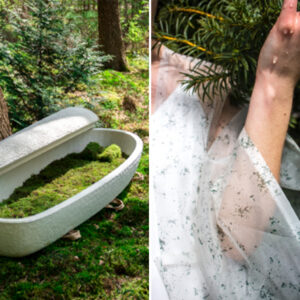
LIVING ARTEFACTS FOR REGENERATIVE ECOLOGIES.
Elvin Karana, Holly McQuillan, Valentina Rognoli, Elisa Giaccardi
Abstract: Introduced in 2020, the concept of living artefacts encompasses biodesign outcomes that uphold the livingness of organisms such as fungi, algae, bacteria, and plants, to enable the emergence of novel functions, interactions and expressions within everyday life. This paper situates living artefacts at the confluence of the sustainability discourse and more-thanhuman ontologies, illuminating the unprecedented opportunities that living artefacts present for regenerative ecologies. These ecologies are characterized by a fundamental inclination toward mutualism, creativity, and coevolution. In regenerative ecologies, the human-nature relationship transcends the binary distinction and it manifests as a single autopoietic system in which the constituent members collaboratively engage in the creation, transformation, and evolution of shared habitats. The paper outlines five pillars, supplemented by guiding questions and two illustrative cases, to aid designers in unlocking, articulating, and critically evaluating the potential of living artefacts for regenerative ecologies.
Journal of Research Directions: Biotechnology Design, 2023. (Accepted)
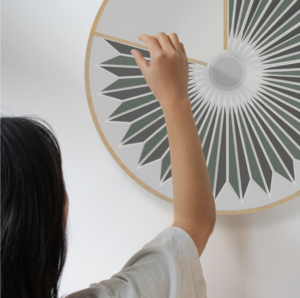
Jiwei Zhou, Raphael Kim, Zjenja Doubrovski, Joana Martins, Elisa Giaccardi, Elvin Karana
Abstract: Microbes offer designers opportunities to endow artefacts with environmental sensing and adapting abilities, and unique expres- sions. However, microbe-embedded artefacts present a challenge of temporal dissonance, reflected by a “time lag” typically experienced by humans in noticing the gradual and minute shifts in microbial metabolism. This could compromise fluency of interactions and may hinder timely noticing and attending to microbes in living artefacts. In addressing this challenge, we introduce Cyano-chromic Interface, in which photosynthetic activity of cyanobacteria (Syne- chocystis sp. PCC6803) is timely surfaced by an electrochromic (EC) material through its monochromatic display. Grounded through interface performance characterization and design primitives, we developed application concepts through which we instantiate how the interface can be tuned for diverse functional and experiential outcomes in living artefacts. We further discuss the potential of aligning human-microbe temporalities for enriched interactions and reciprocal relationships with microbes, and beyond.
DIS ‘23, July 10–14, 2023, Pittsburgh, PA, USA. ACM. ISBN 978-1-4503-9893-0/23/07. https://doi.org/10.1145/3563657.3596132
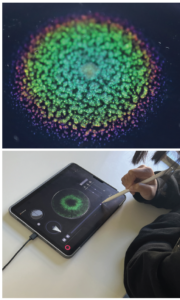
FLAVOMETRICS: TOWARDS A DIGITAL TOOL TO UNDERSTAND AND TUNE LIVING AESTHETICS OF FLAVOBACTERIA.
Clarice Risseeuw, Jose F. Martinez Castro, Pascal Barla, Elvin Karana
Abstract: Integrating microorganisms into artefacts is a growing area of interest for HCI designers. However, the time, resources, and knowledge required to understand complex microbial behaviour limits designers from creatively exploring temporal expressions in living artefacts, i.e., living aesthetics. Bridging biodesign and computer graphics, we developed FlavoMetrics, an interactive digital tool that supports biodesigners in exploring Flavobacteria’s living aesthetics. This open-source tool enables designers to virtually inoculate bacteria and manipulate stimuli to tune Flavobacteria’s living colour in a digital environment. Six biodesigners evaluated the tool and reflected on its implications for their practices, for example, in (1) understanding spatio-temporal qualities of microorganisms beyond 2D, (2) biodesign education, and (3) the experience prototyping of living artefacts. With FlavoMetrics, we hope to inspire novel HCI tools for accessible and time- and resource-efficient biodesign as well as for better alignment with divergent microbial temporalities in living with living artefacts.
DIS ‘23, July 10–14, 2023, Pittsburgh, PA, USA. ACM. ISBN 978-1-4503-9893-0/23/07. https://doi.org/10.1145/3563657.3596085
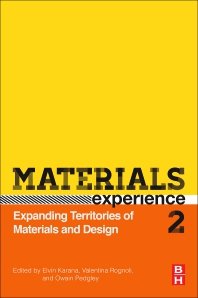
MATERIALS EXPERIENCE 2: EXPANDING TERRITORIES OF MATERIALS AND DESIGN.
Owain Pedgley, Valentina Rognoli, Elvin Karana (Eds.)
Abstract: Materials Experience 2: Expanding Territories of Materials and Design is the follow-up companion to Materials Experience published in 2014. Materials experience as a concept has evolved substantially and is now mobilized to incorporate new ways of thinking and designing. Through all-new peer-reviewed chapters and project write-ups, the book presents critical perspectives on new and emerging relationships between designers, materials, and artifacts. Subtitled Expanding Territories of Materials and Design, the book examines in depth the increased prevalence of material-driven design practices, as well as the changing role of materials themselves, toward active and influential agents within and outside design processes. The book is essential reading for anyone involved in materials and design, containing 11 authoritative chapters and 18 illustrated accounts of contemporary research projects and practices.
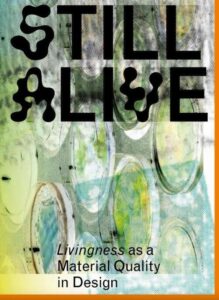
STILL ALIVE: LIVINGNESS AS A MATERIAL QUALITY IN DESIGN.
Elvin Karana
Abstract: STILL ALIVE presents the year-long journey of researchers from Material Incubator (Avans University of Applied Sciences, Delft University of Technology, Willem de Kooning Academy), shedding light on the practical and social aspects of designing and living with living artefacts.
Breda, Avans University of Applied Sciences, 2020. Available online.
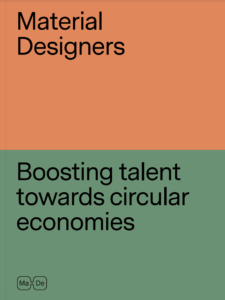
MATERIAL DESIGNERS: BOOSTING TALENT TOWARDS CIRCULAR ECONOMIES.
Laura Clèrries, Valentina Rognoli, Seetal Solanki, Pere Llorach (Eds.)
Abstract: MaDe Book provides a better understanding on how materials design can contribute to attain a more circular economy. It contains a compilation of expert articles and short interviews, a glossary of concepts, original resources, detailed finalists and winners’ projects and the full directory of material designers.
2021. Available online.
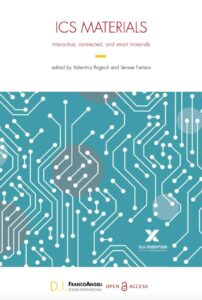
ICS MATERIALS: INTERACTIVE, CONNECTED, AND SMART MATERIALS
Valentina Rognoli, Venere Ferraro (Eds.)
Abstract: This present book covers a series of outstanding reputation researchers’ contributions on the topic of ICS Materials: a new class of emerging materials with properties and qualities concerning interactivity, connectivity and intelligence. In the general framework of ICS Materials’ domain, each chapter deals with a specific aspect following the characteristic perspective of each researcher. As result, methods, tools, guidelines emerged that are relevant and applicable to several contexts such as product, interaction design, materials science and many more.
Franco Angeli, Design International, 2020. Available online.
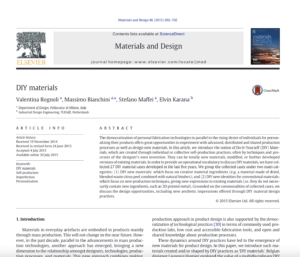
Valentina Rognoli, Massimo Bianchini, Stefano Maffei, Elvin Karana
Abstract: The democratization of personal fabrication technologies in parallel to the rising desire of individuals for personalizing their products offers great opportunities to experiment with advanced, distributed and shared production processes as well as design new materials. In this article, we introduce the notion of Do-It-Yourself (DIY) Materials, which are created through individual or collective self-production practices, often by techniques and processes of the designer’s own invention. They can be totally new materials, modified, or further developed versions of existing materials. In order to provide an operational vocabulary to discuss DIY materials, we have collected 27 DIY material cases developed in the last five years. We group the collected cases under two main categories: (1) DIY new materials: which focus on creative material ingredients (e.g. a material made of dried, blended waste citrus peel combined with natural binders); and (2) DIY new identities for conventional materials: which focus on new production techniques, giving new expressions to existing materials (i.e. they do not necessarily contain new ingredients, such as 3D printed metal). Grounded on the commonalities of collected cases, we discuss the design opportunities, including new aesthetic impressions offered through DIY material design practices.
Journal Article. Materials & Design, 2015. Available online.
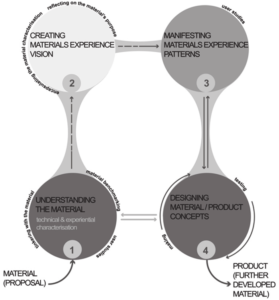
MATERIAL DRIVEN DESIGN (MDD): A METHOD TO DESIGN FOR MATERIAL EXPERIENCES.
Elvin Karana, Bahar Barati, Valentina Rognoli, Anouk Zeeuw van der Laan
Abstract: Materials research constantly offers novel materials as better alternatives to convention. Functional aptness is taken for granted at the first commercial launch of a new material. Nevertheless, this alone may not be enough for its commercial success and widespread use. The ‘material’ should also elicit meaningful user experiences in and beyond its utilitarian assessment. This requires qualifying the material not only for what it is, but also for what it does, what it expresses to us, what it elicits from us, and what it makes us do. In search of a proper application through such an understanding, material scientists and industries have reached out to designers to guide the development of materials by experiential goals. However, how to design for experiences with and for a material at hand has been poorly addressed to date. In this article, we propose a method, Material Driven Design (MDD), to facilitate designing for material experiences. After explaining the theoretical foundation of the method, an illustrative case is presented—where ‘coffee waste’ is the subject of a design effort to conceive a new product concept. Finally, possible research directions are addressed to bring new insights to the effective application of the MDD method to diverse projects.
Journal Article. International Journal of Design, 2015. Available online.
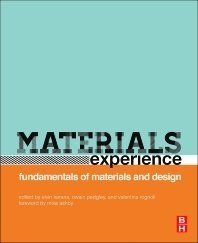
MATERIALS EXPERIENCE: FUNDAMENTALS OF MATERIALS AND DESIGN.
Elvin Karana, Owain Pedgley, Valentina Rognoli (Eds.)
Abstract: There currently exists an abundance of materials selection advice for designers suited to solving technical product requirements. In contrast, a stark gap can be found in current literature that articulates the very real personal, social, cultural and economic connections between materials and the design of the material world. In Materials Experience: fundamentals of materials and design, thirty-four of the leading academicians and experts, alongside 8 professional designers, have come together for the first time to offer their expertise and insights on a number of topics common to materials and product design. The result is a very readable and varied panorama on the world of materials and product design as it currently stands.
ALL PUBLICATIONS
2015
101.Robbins, Holly; Giaccardi, Elisa; Karana, Elvin
De-Commodifying the Device: A Materialist Design Approach for Communication With and Through Connected Objects Workshop
Workshop: The Future of Making: Where Industrial and Personal Fabrication Meet. Critical Alternatives 2015. Aarhus, Denmark. August 2015. , 2015.
@workshop{nokey,
title = {De-Commodifying the Device: A Materialist Design Approach for Communication With and Through Connected Objects},
author = {Holly Robbins and Elisa Giaccardi and Elvin Karana},
year = {2015},
date = {2015-10-15},
urldate = {2015-10-15},
booktitle = {Workshop: The Future of Making: Where Industrial and Personal Fabrication Meet. Critical Alternatives 2015. Aarhus, Denmark. August 2015. },
keywords = {},
pubstate = {published},
tppubtype = {workshop}
}
102.Karana, Elvin; Pedgley, Owain; Rognoli, Valentina
On Materials Experience. Journal Article
In: Design Issues. Volume 31, Number 3, Summer 2015. (S), 2015.
@article{nokey,
title = {On Materials Experience.},
author = {Elvin Karana and Owain Pedgley and Valentina Rognoli},
year = {2015},
date = {2015-10-15},
urldate = {2015-10-15},
journal = {Design Issues. Volume 31, Number 3, Summer 2015. (S)},
keywords = {},
pubstate = {published},
tppubtype = {article}
}
103.Ostuzzi, Francesca; Rognoli, Valentina; Saldien, Jelle; Levi, Marinella
+TUO project: Low cost 3D printers as helpful tool for small communities with rheumatic diseases. Journal Article
In: RAPID PROTOTYPING JOURNAL, 2015.
@article{nokey,
title = {+TUO project: Low cost 3D printers as helpful tool for small communities with rheumatic diseases.},
author = {Francesca Ostuzzi and Valentina Rognoli and Jelle Saldien and Marinella Levi},
year = {2015},
date = {2015-10-15},
urldate = {2015-10-15},
journal = {RAPID PROTOTYPING JOURNAL},
keywords = {},
pubstate = {published},
tppubtype = {article}
}
104.Nobels, Eline; Ostuzzi, Francesca; Levi, Marinella; Rognoli, Valentina; Detand, Jan
Materials, Time and Emotion: how materials change in time? Inproceedings
In: EKSIG 2015. Tangible Means: experiential knowledge through materials., 2015.
@inproceedings{nokey,
title = {Materials, Time and Emotion: how materials change in time?},
author = {Eline Nobels and Francesca Ostuzzi and Marinella Levi and Valentina Rognoli and Jan Detand},
year = {2015},
date = {2015-10-15},
urldate = {2015-10-15},
booktitle = {EKSIG 2015. Tangible Means: experiential knowledge through materials.},
keywords = {},
pubstate = {published},
tppubtype = {inproceedings}
}
105.Rognoli, Valentina
Dynamism and imperfection as emerging materials experiences. A case study. Inproceedings
In: Proceedings of DesForm 2015 - Aesthetics of Interaction: Dynamic, Multisensory, Wise. 9th International Conference on Design and Semantics of Form and Movement, Politecnico di Milano, IT; 10/2015, 2015.
@inproceedings{nokey,
title = {Dynamism and imperfection as emerging materials experiences. A case study.},
author = {Valentina Rognoli},
year = {2015},
date = {2015-10-09},
urldate = {2015-10-09},
booktitle = {Proceedings of DesForm 2015 - Aesthetics of Interaction: Dynamic, Multisensory, Wise. 9th International Conference on Design and Semantics of Form and Movement, Politecnico di Milano, IT; 10/2015},
keywords = {},
pubstate = {published},
tppubtype = {inproceedings}
}
106.Barati, Bahar; Karana, Elvin; Hekkert, Paul; Jönsthövel, Iris
Designing with an Underdeveloped Computational Composite for Materials Experience. Inproceedings
In: Proceedings of EKSIG 2015: Experiential Knowledge Special Interest Group., 2015.
@inproceedings{nokey,
title = {Designing with an Underdeveloped Computational Composite for Materials Experience. },
author = {Bahar Barati and Elvin Karana and Paul Hekkert and Iris Jönsthövel
},
year = {2015},
date = {2015-10-08},
urldate = {2015-10-08},
booktitle = {Proceedings of EKSIG 2015: Experiential Knowledge Special Interest Group.},
keywords = {},
pubstate = {published},
tppubtype = {inproceedings}
}
107.Barati, Bahar; Karana, Elvin; Hekkert, Paul
From Way Finding in the Dark to Interactive CPR Trainer: Designing with Computational Composites. Inproceedings
In: Proceedings of DesForm 2015., 2015.
@inproceedings{nokey,
title = {From Way Finding in the Dark to Interactive CPR Trainer: Designing with Computational Composites. },
author = {Bahar Barati and Elvin Karana and Paul Hekkert},
year = {2015},
date = {2015-10-07},
urldate = {2015-10-07},
booktitle = {Proceedings of DesForm 2015.},
keywords = {},
pubstate = {published},
tppubtype = {inproceedings}
}
108.Giaccardi, Elisa; Karana, Elvin
Foundations of Materials Experience: An Approach for HCI. Inproceedings
In: Proceedings of CHI 2015. Seoul, South Korea. ACM Press: 2447-2456. (S), 2015.
@inproceedings{nokey,
title = {Foundations of Materials Experience: An Approach for HCI.},
author = {Elisa Giaccardi and Elvin Karana},
year = {2015},
date = {2015-10-01},
urldate = {2015-10-01},
booktitle = {Proceedings of CHI 2015. Seoul, South Korea. ACM Press: 2447-2456. (S)},
keywords = {},
pubstate = {published},
tppubtype = {inproceedings}
}
2014
109.Pauw, Ingrid De; Karana, Elvin; Kandachar, Prabhu; Poppelaars, Flora
Comparing Biomimicry and Cradle to Cradle with Ecodesign: a Case Study of Student Design Projects. Journal Article
In: The Journal of Cleaner Production, 78: 174–183., 2014.
@article{nokey,
title = {Comparing Biomimicry and Cradle to Cradle with Ecodesign: a Case Study of Student Design Projects.},
author = {Ingrid De Pauw and Elvin Karana and Prabhu Kandachar and Flora Poppelaars},
year = {2014},
date = {2014-10-24},
urldate = {2014-10-24},
journal = {The Journal of Cleaner Production, 78: 174–183.},
keywords = {},
pubstate = {published},
tppubtype = {article}
}
110.Karana, Elvin; Pedgley, Owain; Rognoli, Valentina
Introduction to Materials ExperienceIntroduction to Materials Experience. Book Chapter
In: Karana, Elvin; Pedgley, Owain; Rognoli, Valentina (Ed.): Materials Experience: Fundamentals of Materials and Design, 1st Ed., pp. xxv-xxxiii., Butterworth-Heinemann: Elsevier, UK., 2014.
@inbook{nokey,
title = {Introduction to Materials ExperienceIntroduction to Materials Experience.},
author = {Elvin Karana and Owain Pedgley and Valentina Rognoli},
editor = {Elvin Karana and Owain Pedgley and Valentina Rognoli},
year = {2014},
date = {2014-10-23},
urldate = {2014-10-23},
booktitle = {Materials Experience: Fundamentals of Materials and Design, 1st Ed.},
pages = {xxv-xxxiii.},
publisher = {Butterworth-Heinemann: Elsevier, UK.},
keywords = {},
pubstate = {published},
tppubtype = {inbook}
}
111.Karana, Elvin; Nijkamp, Noortje
Fiberness, reflectiveness and roughness in the characterization of natural and high quality materials. Journal Article
In: The Journal of Cleaner Production, 68: 252–260., 2014.
@article{nokey,
title = {Fiberness, reflectiveness and roughness in the characterization of natural and high quality materials.},
author = {Elvin Karana and Noortje Nijkamp},
year = {2014},
date = {2014-10-17},
urldate = {2014-10-17},
journal = {The Journal of Cleaner Production, 68: 252–260.},
keywords = {},
pubstate = {published},
tppubtype = {article}
}
112.Hekkert, Paul; Karana, Elvin
Designing Material Experience. Book Chapter
In: O. Pedgley E. Karana, V. Rognoli (Ed.): Materials Experience: Fundamentals of Materials and Design., Butterworth-Heinemann: Elsevier, UK., 2014.
@inbook{nokey,
title = {Designing Material Experience.},
author = {Paul Hekkert and Elvin Karana},
editor = {E. Karana, O. Pedgley, V. Rognoli},
year = {2014},
date = {2014-10-17},
urldate = {2014-10-17},
booktitle = {Materials Experience: Fundamentals of Materials and Design.},
publisher = {Butterworth-Heinemann: Elsevier, UK.},
keywords = {},
pubstate = {published},
tppubtype = {inbook}
}
113.Giaccardi, Elisa; Karana, Elvin; Robbins, Holly; D’Olivo, Patrizia
Growing Traces on Objects of Daily Use: A Product Design Perspective for HCI. Inproceedings
In: The ACM Conference on Designing Interactive Systems (DIS): 473-482. (S) (Honorable Mention), 2014.
@inproceedings{nokey,
title = {Growing Traces on Objects of Daily Use: A Product Design Perspective for HCI.},
author = {Elisa Giaccardi and Elvin Karana and Holly Robbins and Patrizia D’Olivo},
year = {2014},
date = {2014-10-17},
urldate = {2014-10-17},
booktitle = { The ACM Conference on Designing Interactive Systems (DIS): 473-482. (S) (Honorable Mention)},
keywords = {},
pubstate = {published},
tppubtype = {inproceedings}
}
114.Pauw, Ingrid De; Karana, Elvin; Kandachar, Prabhu
Assessing Sustainability in Nature-Inspired Design. Journal Article
In: Journal of Sustainable Engineering, 8: 5-13., 2014.
@article{nokey,
title = {Assessing Sustainability in Nature-Inspired Design.},
author = {Ingrid De Pauw and Elvin Karana and Prabhu Kandachar},
year = {2014},
date = {2014-10-17},
urldate = {2014-10-17},
journal = {Journal of Sustainable Engineering, 8: 5-13.},
keywords = {},
pubstate = {published},
tppubtype = {article}
}
115.Lussenburg, Kirsten; Van-Der-Velden, Natascha; Doubrovski, Zjenja; Geraedts, Jo; Karana, Elvin
Designing with 3D Printed Textiles: A case study of Material Driven Design. Inproceedings
In: Proceedings of 4th International Conference on Additive Technologies, Vienna. , 2014.
@inproceedings{nokey,
title = {Designing with 3D Printed Textiles: A case study of Material Driven Design.},
author = {Kirsten Lussenburg and Natascha Van-Der-Velden and Zjenja Doubrovski and Jo Geraedts and Elvin Karana},
year = {2014},
date = {2014-10-16},
urldate = {2014-10-16},
booktitle = {Proceedings of 4th International Conference on Additive Technologies, Vienna. },
keywords = {},
pubstate = {published},
tppubtype = {inproceedings}
}
116.Karana, Elvin; Pedgley, Owain; Rognoli, Valentina (Ed.)
Materials Experience: Fundamentals of Materials and Design. Book
1st Ed., Butterworth-Heinemann: Elsevier, UK., 2014.
@book{nokey,
title = {Materials Experience: Fundamentals of Materials and Design. },
editor = {Elvin Karana and Owain Pedgley and Valentina Rognoli},
year = {2014},
date = {2014-10-16},
urldate = {2014-10-16},
publisher = {Butterworth-Heinemann: Elsevier, UK.},
edition = {1st Ed.},
keywords = {},
pubstate = {published},
tppubtype = {book}
}
117.Rognoli, Valentina; Karana, Elvin
Towards a New Materials Aesthetic Based on Imperfection and Graceful Ageing. Book Chapter
In: O. Pedgley Karana E., V. Rognoli (Ed.): Materials Experience: Fundamentals of Materials and Design, 1st Ed., pp. 145-153., Butterworth-Heinemann: Elsevier, UK., 2014.
@inbook{nokey,
title = {Towards a New Materials Aesthetic Based on Imperfection and Graceful Ageing.},
author = {Valentina Rognoli and Elvin Karana},
editor = {Karana E., O. Pedgley, V. Rognoli},
year = {2014},
date = {2014-10-10},
urldate = {2014-10-10},
booktitle = {Materials Experience: Fundamentals of Materials and Design, 1st Ed.},
issuetitle = {Rognoli V., and Karana, E.,},
pages = {145-153.},
publisher = {Butterworth-Heinemann: Elsevier, UK.},
keywords = {},
pubstate = {published},
tppubtype = {inbook}
}
2013
118.Salvia, Giuseppe; Rognoli, Valentina; Levi, Marinella
(Un)Conventional engineering tests to predict fabrics sensorial properties. Journal Article
In: INTERNATIONAL JOURNAL OF COMPUTER AIDED ENGINEERING AND TECHNOLOGY, 2013.
@article{nokey,
title = {(Un)Conventional engineering tests to predict fabrics sensorial properties.},
author = {Giuseppe Salvia and Valentina Rognoli and Marinella Levi},
year = {2013},
date = {2013-10-18},
urldate = {2013-10-18},
journal = {INTERNATIONAL JOURNAL OF COMPUTER AIDED ENGINEERING AND TECHNOLOGY},
keywords = {},
pubstate = {published},
tppubtype = {article}
}
119.Pauw, Ingrid De; Karana, Elvin; Kandachar, Prabhu
Cradle to Cradle in Product Development: A Case Study of Closed-Loop Design. Inproceedings
In: In the Proceedings of the 20th CIRP International Conference on Life Cycle Engineering; pg. 37-52., 2013.
@inproceedings{nokey,
title = {Cradle to Cradle in Product Development: A Case Study of Closed-Loop Design. },
author = {Ingrid De Pauw and Elvin Karana and Prabhu Kandachar},
year = {2013},
date = {2013-10-17},
urldate = {2013-10-17},
booktitle = {In the Proceedings of the 20th CIRP International Conference on Life Cycle Engineering; pg. 37-52.},
keywords = {},
pubstate = {published},
tppubtype = {inproceedings}
}
120.Crippa, Gaia; Rognoli, Valentina; Levi, Marinella
Materials and emotions, a study on the relations between materials and emotions in industrial products. Inproceedings
In: Proceedings of 8th International Design and Emotion Conference, Design and Emotion Society., 2013.
@inproceedings{nokey,
title = {Materials and emotions, a study on the relations between materials and emotions in industrial products.},
author = {Gaia Crippa and Valentina Rognoli and Marinella Levi},
year = {2013},
date = {2013-10-12},
urldate = {2013-10-12},
booktitle = {Proceedings of 8th International Design and Emotion Conference, Design and Emotion Society.},
keywords = {},
pubstate = {published},
tppubtype = {inproceedings}
}
2012
121.Mink, Stefanie; Karana, Elvin
Ape & Banana: A new user experience for collecting bio-based disposables at festivals. Inproceedings
In: In the Proceedings of 8th International Conference on Design & Emotion, London, UK, 2012.
@inproceedings{nokey,
title = {Ape & Banana: A new user experience for collecting bio-based disposables at festivals.},
author = {Stefanie Mink and Elvin Karana},
year = {2012},
date = {2012-10-26},
urldate = {2012-10-26},
booktitle = {In the Proceedings of 8th International Conference on Design & Emotion, London, UK},
keywords = {},
pubstate = {published},
tppubtype = {inproceedings}
}
122.Karana, Elvin
Characterization of ‘natural’ and ‘high-quality’ materials to improve perception of bio-plastics. Journal Article
In: The Journal of Cleaner Production, 37: 316-325. (S), 2012.
@article{nokey,
title = { Characterization of ‘natural’ and ‘high-quality’ materials to improve perception of bio-plastics.},
author = {Elvin Karana},
year = {2012},
date = {2012-10-19},
urldate = {2012-10-19},
journal = {The Journal of Cleaner Production, 37: 316-325. (S)},
keywords = {},
pubstate = {published},
tppubtype = {article}
}
123.Pauw, Ingrid De; Kandachar, Prabhu; Karana, Elvin
Nature-inspired design strategies in sustainable product development: a case-study of student projects. Inproceedings
In: Proceedings of Design 2012, International Conference, Cavtat, Croatia., 2012.
@inproceedings{nokey,
title = {Nature-inspired design strategies in sustainable product development: a case-study of student projects.},
author = {Ingrid De Pauw and Prabhu Kandachar and Elvin Karana},
year = {2012},
date = {2012-10-19},
urldate = {2012-10-19},
booktitle = {Proceedings of Design 2012, International Conference, Cavtat, Croatia.},
keywords = {},
pubstate = {published},
tppubtype = {inproceedings}
}
124.Ostuzzi, Francesca; Salvia, Giuseppe; Rognoli, Valentina; Levi, Marinella
The value of imperfection in industrial product. Inproceedings
In: Proceedings of DPPI11, 2012.
@inproceedings{nokey,
title = {The value of imperfection in industrial product.},
author = {Francesca Ostuzzi and Giuseppe Salvia and Valentina Rognoli and Marinella Levi},
year = {2012},
date = {2012-10-18},
urldate = {2012-10-18},
booktitle = {Proceedings of DPPI11},
keywords = {},
pubstate = {published},
tppubtype = {inproceedings}
}
125.Spitas, Christos; Badke-Schaub, Petra; Spitas, Vasilios; Rajabalinejad, Mohammad; Karana, Elvin
Creating a research environment for the evaluation of design education in embodiment design. Inproceedings
In: Proceedings of Design 2012, International Conference, Cavtat, Croatia., 2012.
@inproceedings{nokey,
title = {Creating a research environment for the evaluation of design education in embodiment design.},
author = {Christos Spitas and Petra Badke-Schaub and Vasilios Spitas and Mohammad Rajabalinejad and Elvin Karana},
year = {2012},
date = {2012-10-17},
urldate = {2012-10-17},
booktitle = {Proceedings of Design 2012, International Conference, Cavtat, Croatia.},
journal = {Proceedings of Design 2012, International Conference, Cavtat, Croatia.},
keywords = {},
pubstate = {published},
tppubtype = {inproceedings}
}
126.Taekema, Jorrit; Karana, Elvin
Creating awareness on natural fibre composites in design. Inproceedings
In: In the Proceedings of Design 2012, International Conference, Cavtat, Croatia. , 2012.
@inproceedings{nokey,
title = {Creating awareness on natural fibre composites in design.},
author = {Jorrit Taekema and Elvin Karana},
year = {2012},
date = {2012-10-12},
urldate = {2012-10-12},
booktitle = {In the Proceedings of Design 2012, International Conference, Cavtat, Croatia. },
journal = { Proceedings of Design 2012, International Conference, Cavtat, Croatia.},
keywords = {},
pubstate = {published},
tppubtype = {inproceedings}
}
127.Micocci, Massimo; Salvia, Giuseppe; Rognoli, Valentina; Ostuzzi, Francesca; Levi, Marinella
The role of "connections" for sustainable longer-lasting artifacts and relationship with users. Inproceedings
In: Sustainable Innovation 2012. Towards Sustainable Product Design: 17th International Conference., 2012.
@inproceedings{nokey,
title = {The role of "connections" for sustainable longer-lasting artifacts and relationship with users.},
author = {Massimo Micocci and Giuseppe Salvia and Valentina Rognoli and Francesca Ostuzzi and Marinella Levi},
year = {2012},
date = {2012-10-12},
urldate = {2012-10-12},
booktitle = {Sustainable Innovation 2012. Towards Sustainable Product Design: 17th International Conference.},
keywords = {},
pubstate = {published},
tppubtype = {inproceedings}
}
2011
128.Rognoli, Valentina; Karana, Elvin; Pedgley, Owain
Natural fibre composites in product design: an investigation into material perception and acceptance. Inproceedings
In: Proceedings of International Conference on Designing Pleasurable Products and Interfaces (DPPI), 22-25 June, Milan., 2011.
@inproceedings{nokey,
title = {Natural fibre composites in product design: an investigation into material perception and acceptance.},
author = {Valentina Rognoli and Elvin Karana and Owain Pedgley},
year = {2011},
date = {2011-10-21},
urldate = {2011-10-21},
booktitle = { Proceedings of International Conference on Designing Pleasurable Products and Interfaces (DPPI), 22-25 June, Milan.},
keywords = {},
pubstate = {published},
tppubtype = {inproceedings}
}
129.Rognoli, Valentina; Levi, Marinella
Il senso dei materiali per il design. [The sense of materials for design] Book
Franco Angeli, 2011.
@book{nokey,
title = {Il senso dei materiali per il design. [The sense of materials for design]},
author = {Valentina Rognoli and Marinella Levi},
year = {2011},
date = {2011-10-21},
urldate = {2011-10-21},
publisher = {Franco Angeli},
keywords = {},
pubstate = {published},
tppubtype = {book}
}
130.Karana, Elvin
Materials Selection in Design: From Research to Education. Inproceedings
In: The 1st International Symposium of CUMULUS Association and DRS for Design Education Researchers, Paris, France., 2011.
@inproceedings{,
title = {Materials Selection in Design: From Research to Education.},
author = {Elvin Karana},
year = {2011},
date = {2011-10-20},
urldate = {2011-10-20},
booktitle = {The 1st International Symposium of CUMULUS Association and DRS for Design Education Researchers, Paris, France.},
keywords = {},
pubstate = {published},
tppubtype = {inproceedings}
}
131.Colombo, Sara; Gorno, Roberta; Valentina, Rognoli
Correlation between intrinsic characteristics of industrial products and user's perception. Inproceedings
In: ICORD 11: Proceedings of the 3rd International Conference on Research into Design Engineering, 2011.
@inproceedings{nokey,
title = {Correlation between intrinsic characteristics of industrial products and user's perception.},
author = {Sara Colombo and Roberta Gorno and Rognoli Valentina},
year = {2011},
date = {2011-10-14},
urldate = {2011-10-14},
booktitle = {ICORD 11: Proceedings of the 3rd International Conference on Research into Design Engineering},
keywords = {},
pubstate = {published},
tppubtype = {inproceedings}
}
132.Rognoli, Valentina; Salvia, Giuseppe; Levi, Marinella
The aesthetic of interaction with materials for design: the bioplasticsʼ identity. Inproceedings
In: Proceedings of DPPI11, 2011.
@inproceedings{nokey,
title = {The aesthetic of interaction with materials for design: the bioplasticsʼ identity.},
author = {Valentina Rognoli and Giuseppe Salvia and Marinella Levi},
year = {2011},
date = {2011-10-13},
urldate = {2011-10-13},
booktitle = {Proceedings of DPPI11},
keywords = {},
pubstate = {published},
tppubtype = {inproceedings}
}
133.Ostuzzi, Francesca; Salvia, Giuseppe; Rognoli, Valentina; Levi, Marinella
Il valore dell'imperfezione.L'approccio wabi sabi al design. [The value of imperfection. The wabi sabi approach to design] Book
Franco Angeli, 2011.
@book{nokey,
title = {Il valore dell'imperfezione.L'approccio wabi sabi al design. [The value of imperfection. The wabi sabi approach to design]},
author = {Francesca Ostuzzi and Giuseppe Salvia and Valentina Rognoli and Marinella Levi},
year = {2011},
date = {2011-10-06},
urldate = {2011-10-06},
publisher = {Franco Angeli},
keywords = {},
pubstate = {published},
tppubtype = {book}
}
2010
134.Salvia, Giuseppe; Rognoli, Valentina; Malvoni, Elisa; Levi, Marinella
The Objectivity of Users’ Emotional Experience with Textiles. Biological and Mechanical Tests for the Prediction of the Sensorial Profile of Fabrics. Inproceedings
In: Proceedings of the 7th Design and Emotion Conference 2010., 2010.
@inproceedings{nokey,
title = {The Objectivity of Users’ Emotional Experience with Textiles. Biological and Mechanical Tests for the Prediction of the Sensorial Profile of Fabrics. },
author = {Giuseppe Salvia and Valentina Rognoli and Elisa Malvoni and Marinella Levi},
year = {2010},
date = {2010-10-08},
urldate = {2010-10-08},
booktitle = {Proceedings of the 7th Design and Emotion Conference 2010.},
keywords = {},
pubstate = {published},
tppubtype = {inproceedings}
}
2009
135.Rognoli, Valentina
A broad survey on expressive-sensorial characterization of materials for design education. Journal Article
In: METU JOURNAL OF THE FACULTY OF ARCHITECTURE, 2009.
@article{nokey,
title = {A broad survey on expressive-sensorial characterization of materials for design education.},
author = {Valentina Rognoli},
year = {2009},
date = {2009-10-15},
journal = {METU JOURNAL OF THE FACULTY OF ARCHITECTURE},
keywords = {},
pubstate = {published},
tppubtype = {article}
}
136.Salvia, Giuseppe; Rognoli, Valentina; Levi, Marinella
Sensorial profile anticipation by engineering objective methods for competitiveness in textile field. Bachelor Thesis
2009.
@bachelorthesis{nokey,
title = {Sensorial profile anticipation by engineering objective methods for competitiveness in textile field.},
author = {Giuseppe Salvia and Valentina Rognoli and Marinella Levi},
year = {2009},
date = {2009-10-08},
urldate = {2009-10-08},
journal = {Proceedings of TMCE 2010 Symposium},
keywords = {},
pubstate = {published},
tppubtype = {bachelorthesis}
}
SEARCH FOR PUBLICATIONS
